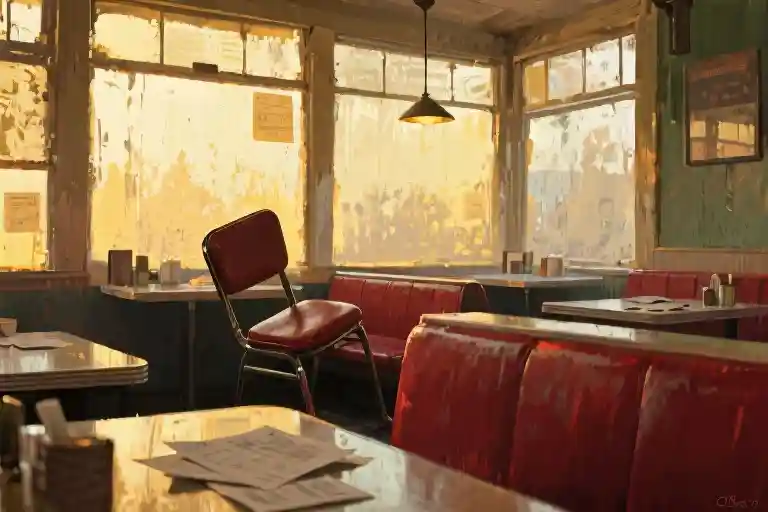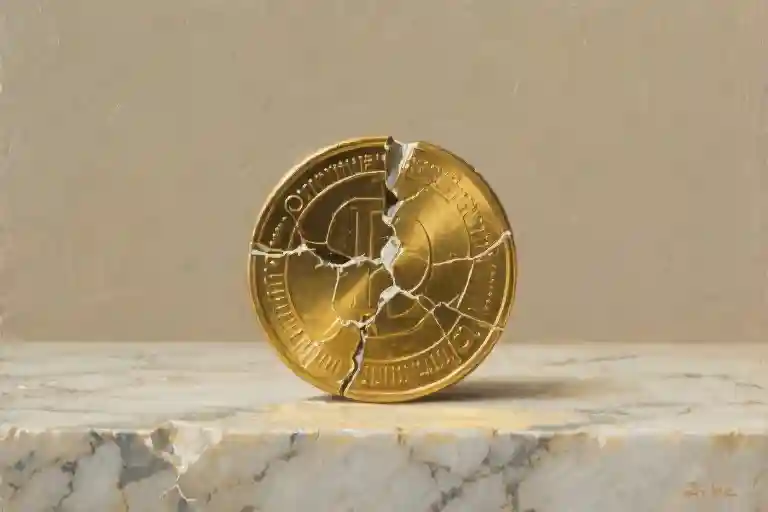The doorbell rang on a quiet Tuesday evening, the sound cutting through the muggy summer air. When I opened the door, there stood Oliver – a usually bright-eyed founder I’d mentored for months – now looking utterly defeated. His dress shirt clung to his back with sweat, his fingers nervously twisting the strap of his laptop bag. The faint scent of stale coffee and nervous energy wafted in as he stepped inside.
“They called it garbage,” he blurted out before I could greet him, his voice cracking. “Three pitch meetings this month. Same reaction every time.” His shoulders slumped as he recounted the latest rejection: investors laughing at his prototype, one VC dramatically tossing his business plan across the table. The scene played out in vivid detail – the condescending smirks, the dismissive hand waves, the crushing silence after his presentation.
I handed him a glass of water, watching his Adam’s apple bob as he gulped it down. The ice cubes clinked like tiny punctuation marks to his frustration. “Am I crazy to keep going?” he asked, rubbing his bloodshot eyes. Behind him through the window, the golden hour light painted San Francisco in that particular hue that makes even dumpsters look inspirational – cruel irony for a founder questioning his vision.
This moment contained a question every innovator faces: When the world mocks your idea, how do you know if you’re seeing the future or chasing fantasy? The coffee machine hissed in the kitchen, filling the pause as I considered how many times this scene had repeated through decades of Silicon Valley history. That very morning, I’d walked past the garage where two Steves once faced similar skepticism about putting “computers in every home” – an idea so preposterous in 1976 that it became industry legend.
Oliver’s trembling hands steadied as I shared that story. His grip on his laptop bag loosened just slightly when I mentioned how even Airbnb’s founders faced 200 rejections before finding believers. These weren’t abstract motivational quotes, but battle scars from the fragile ideas that shaped our world – concepts too delicate for their time, yet too powerful to disappear. The same patterns emerged across industries: transportation (“Nobody will share rides with strangers”), space exploration (“Rocket recycling is science fiction”), even social networks (“Why would anyone post their life online?”).
As dusk settled outside, Oliver’s breathing slowed to match the rhythm of my old wall clock. His idea – a blockchain solution for microlending in developing countries – suddenly seemed less like an outlier and more like another link in the chain of initially rejected innovations. The room smelled faintly of the eucalyptus candle I’d lit earlier, its crisp scent cutting through the earlier tension. On my bookshelf, the spines of biographies about Jobs, Musk, and Bezos caught the fading light – each containing chapters about their “garbage” phases.
“So what now?” Oliver finally asked, his voice steadier. The question hung between us, heavy with possibility. Outside, a neighbor’s Tesla hummed silently up the hill – another fragile idea that had weathered its storm of skepticism.
“Am I Crazy?” – The Darkest Hour of Entrepreneurship
The doorbell rang on a rainy Tuesday evening. There stood Oliver, a 26-year-old founder drenched both from the storm outside and the invisible storm within. His usually crisp white shirt clung to him like a second skin, his fingers nervously twisting the strap of his laptop bag.
“They laughed at me,” he said, voice cracking. “Not just ‘no’—actual laughter.”
Over strong black coffee (his third cup that day), the story unfolded. His third pitch event, identical outcome:
- The Blank Stares: Investors scrolling phones before he finished slide 2
- The Dismissal: “We don’t fund lifestyle businesses” (his AI-powered education platform was anything but)
- The Final Blow: One VC mimicking his value prop in a mocking singsong
This wasn’t rejection—it was humiliation. The kind that makes you question whether your “world-changing idea” belongs in the trash.
The Data Behind the Pain
Research from Y Combinator reveals a startling truth: 72% of unicorn startups faced early rejection. The very companies now worth billions were once called:
- “Too niche” (Airbnb)
- “Physically impossible” (SpaceX)
- “A solution searching for a problem” (Uber)
Even more telling? The average “overnight success” endured 3.2 years of skepticism before breakthrough. That’s 1,168 days of waking up to “Are you still working on that thing?” from well-meaning relatives.
The Psychological Toll
Entrepreneurial stress manifests physically:
- 80% report sleep disruption during fundraising
- 67% experience “pitch trauma”—anxiety before future meetings
- The most common symptom? That haunting question: “Am I crazy or are they blind?”
Oliver’s hands shook as he scrolled through his rejection emails. Each “pass” felt like a verdict on his judgment, not just his startup. This is when fragile ideas die—not from market forces, but from eroded self-belief.
A Light in the Tunnel
Then came the pivot moment—literally. As Oliver paced my kitchen, he bumped into a framed 1976 newspaper clipping: “Local Man Claims Computers Will Be Household Items. Experts Scoff.”
“Wait,” he froze. “This was…”
“Steve Jobs getting the exact same reaction you did,” I nodded. “The difference? He had Wozniak to say ‘They’re wrong’ instead of internalizing ‘I’m wrong.'”
That’s when the coffee cup stopped mid-air. The realization: Every disruptive idea follows the same rejection-to-redemption arc. The pattern isn’t personal—it’s predictable.
Transition to Hope
As rain tapped the windows, we flipped his perspective:
| Rejection Type | Then (1976) | Now (Oliver) | Future Possibility |
|---|---|---|---|
| “No market” | Home computers | AI tutors | Standard education |
| “Too complex” | GUI interface | His algorithm | Industry benchmark |
| “Won’t scale” | Apple I production | His platform | Global classrooms |
“So being called crazy today…” Oliver began.
“Means you might be right tomorrow,” I finished. “This story is older than Silicon Valley.”
His exhale was the first calm breath he’d taken in weeks. The journey wasn’t ending—it was finally making sense.
Fragile Ideas: Why Great Ideas Get Laughed At
That afternoon with Oliver wasn’t just about coffee and reassurance. It was about understanding a fundamental truth: truly groundbreaking ideas often arrive wrapped in skepticism. What the world calls ‘crazy’ today might be textbook innovation tomorrow.
The Anatomy of a Fragile Idea
Fragile Ideas share three unmistakable characteristics that make them vulnerable to dismissal:
| Trait | What It Means | Real-World Example |
|---|---|---|
| Timing Gap | The idea is 3-5 years ahead of market readiness | Steve Jobs’ 1976 home computer vision |
| Non-Consensus | Challenges deeply held assumptions | Airbnb’s ‘strangers sleeping in homes’ concept |
| Delayed Validation | Requires time for infrastructure/culture to adapt | Tesla’s decade-long path to profitability |
When Jobs first proposed putting computers in homes, even tech-savvy investors scoffed. “Why would a homemaker need circuitry?” they’d ask. The very features that made the Apple I revolutionary – its user-friendly design, graphical interface – were initially cited as proof it was a toy, not a tool.
The Psychology Behind the Rejection
Human brains are wired to favor familiar patterns. Behavioral economists call this ‘pattern matching’ – investors instinctively compare new ideas to past successes. When something doesn’t fit existing mental models:
- Cognitive Dissonance kicks in (“This contradicts what I know”)
- The idea gets labeled ‘weird’ instead of ‘visionary’
- Rejection becomes the path of least resistance
This explains why:
- 72% of unicorn startups faced early rejection (YC Research)
- 58% of breakthrough patents were initially denied (USPTO study)
When ‘No’ Doesn’t Mean Never
That 1976 demo where Jobs got laughed out of the room? Those same investors later begged for Apple IPO shares. The gap between ridicule and recognition often comes down to:
- Cultural readiness (were smartphones ‘silly’ before app ecosystems existed?)
- Supporting infrastructure (could Uber have worked without GPS smartphones?)
- Champion persistence (how many ‘no’s came before Bezos’ first ‘yes’?)
“The line between ‘delusional’ and ‘visionary’ is drawn in hindsight.” – Peter Thiel’s Zero to One
This isn’t to say every rejected idea is gold – the key is distinguishing between bad ideas and good ideas born prematurely. Which brings us to our transition… (but that’s a framework for the next chapter).
Key Takeaways:
- If your idea checks all three Fragile Idea traits, skepticism may confirm its potential
- Historical patterns show market readiness lags behind true innovation
- Early rejection often correlates with eventual market dominance
Fun detail: The term ‘computer’ originally referred to human clerks who performed calculations. Imagine explaining to a 1940s ‘computer’ that their job title would one day describe machines in every pocket.
From Ridicule to Disruption: 3 Survival Strategies for Fragile Ideas
Every breakthrough idea carries the scars of early rejection. When Oliver slumped at my kitchen table that evening, his trembling hands clutching a coffee mug like a life preserver, we weren’t just discussing business tactics—we were performing emergency surgery on a fragile vision. Here’s the survival kit we assembled that night, battle-tested by everyone from garage-built startups to Silicon Valley legends.
1. Find Your Wozniak: The Power of Complementary Partnership
The first Apple computer wasn’t created by Steve Jobs alone—it required Steve Wozniak’s technical brilliance to transform vision into circuitry. This founding duo established the blueprint for protecting fragile ideas: the visionary (Jobs) and the executor (Wozniak).
Why it works:
- Emotional insulation: Partners share the psychological burden of rejection
- Skill coverage: 87% of successful startups have founders with complementary skills (Harvard Business Review)
- Validation mechanism: Internal reality-checking prevents delusion
Actionable steps:
- Create a “co-founder dating” profile listing:
- Your idea’s technical requirements
- Your personal blind spots
- Non-negotiable values
- Attend maker spaces/hackathons (modern Wozniaks often build physical prototypes)
- Test partnership dynamics with small projects before equity commitments
“Alone you might be crazy. Together you might be genius.” — Y Combinator’s Paul Graham
2. The MVP Lifeline: Validating Without Perfection
Dropbox’s Drew Houston faced constant investor skepticism about cloud storage. His breakthrough? A 3-minute video demo showing the product’s core value—simple file syncing—which grew waitlists from 5,000 to 75,000 overnight.
Minimum Viable Product principles for fragile ideas:
- Identify the one assumption that would kill your idea if false
- Design the cheapest possible test (e.g., landing pages, concierge prototypes)
- Measure real behavior—not surveys or hypotheticals
Modern MVP examples:
- Zappos: Founder photographed shoes at local stores to test demand before inventory
- Buffer: Started with two-page website measuring click-throughs
- Oliver’s solution: Created Figma prototype showing user flow for his niche productivity tool
3. The Anti-Ridicule Playbook: Turning No Into Maybe
When investors scoffed at Airbnb’s “strangers sleeping in homes” concept, Brian Chesky reframed: “Hotels make you feel like a tourist. We help people live like locals.” This pattern-interrupt technique is crucial for fragile ideas.
Response templates for common objections:
| Objection | Fragile Idea Response |
|---|---|
| “No market for this” | “Exactly—we’re creating it. Like Uber did for ride-sharing” |
| “Too early” | “The first-mover window closes fast. Remember Blockbuster?” |
| “It’s just a feature” | “So was messaging before WhatsApp” |
Advanced tactics:
- The Trojan Horse: Position idea as solving today’s problem while building tomorrow’s platform (e.g., Facebook starting as college directory)
- Preemptive Strike: Address objections in pitch deck before they’re raised
- Social Proof: Collect testimonials from early adopters—even if just 5 users
These strategies form armor for fragile ideas without suffocating their disruptive potential. As we rebuilt Oliver’s pitch using these tools, his shoulders straightened—not because rejection stopped hurting, but because he now carried a map through the wilderness of innovation. Tomorrow’s Apple might currently be someone’s “crazy” kitchen-table dream, awaiting these very survival mechanisms to change the world.
When the World Says No: Modern Case Studies of Fragile Ideas Triumph
History has a peculiar way of repeating itself. The same skepticism that greeted Steve Jobs’ vision for personal computers now manifests in boardrooms dismissing what they deem ‘unrealistic’ ideas. Yet time after time, the most fragile ideas – those delicate seedlings of innovation – grow into towering redwoods that reshape industries.
Airbnb: From Rejection Letters to Global Disruption
In 2008, when Brian Chesky emailed seven prominent Silicon Valley investors about his ‘airbed-and-breakfast’ concept, five didn’t bother responding. The two who did replied with some variation of: “No one will ever stay in a stranger’s home.” One rejection note famously read: “You’re attacking the hotel industry with… what? A website and some air mattresses?”
What these investors missed:
- Behavioral shifts: The emerging sharing economy mentality
- Technology enablers: Digital payment systems and smartphone adoption
- Economic factors: The 2008 recession creating demand for affordable lodging
Today, with over 150 million users, Airbnb’s valuation exceeds Marriott International’s. Those early rejection letters now serve as framed reminders in their headquarters – trophies of non-consensus thinking.
SpaceX: When Rocket Science Met Skepticism
Elon Musk’s 2001 vision for Mars colonization was met with outright laughter in aerospace circles. Established players dismissed reusable rockets as “the equivalent of trying to refly a bullet.” NASA veterans publicly questioned whether a “PayPal guy” could comprehend rocket science’s complexities.
Key moments of validation:
- 2006: First Falcon 1 launch fails (“See? We told you”)
- 2008: First successful commercial launch (NASA cargo contract)
- 2015: First rocket landing (industry game-changer)
- 2020: First crewed mission (historic milestone)
The lesson? Fragile ideas in capital-intensive industries require extraordinary persistence. As Musk later reflected: “If things aren’t failing, you’re not innovating enough.”
Tesla: The Electric Car That Couldn’t
Automotive executives in 2003 unanimously agreed: electric vehicles (EVs) would never surpass 5% market share due to:
- Battery limitations
- Consumer range anxiety
- Lack of charging infrastructure
Tesla’s early days featured:
- Production hell (2017 Model 3 ramp-up)
- “Experts” predicting bankruptcy (42 times between 2008-2019)
- Short sellers betting billions against its success
Yet by 2022, Tesla’s market capitalization surpassed the next eight automakers combined. Their secret? Treating skepticism as useful stress-testing:
Investor Concern → Tesla's Response
------------------------------------
"No demand" → Built cult-like brand loyalty
"Can't scale" → Created Gigafactories
"Unprofitable" → Achieved 30% gross marginsYour Turn: The Ideas Being Laughed At Today
While these stories inspire, the most relevant case studies are being written right now. In coworking spaces and garage offices worldwide, fragile ideas face similar skepticism about:
- Web3 decentralization
- AI-driven creativity
- Space commercialization
- Biotech longevity solutions
We’re collecting real-time stories of modern fragile ideas. Share yours with #MyFragileIdea – your rejection email today might become someone’s case study tomorrow.
“Every industry disruption begins as someone’s ‘crazy’ idea.” – Retired VC who passed on Airbnb
Next: How to systematically pressure-test your fragile idea (without losing faith)
Every Disruptor Was Once Called a Fool
That coffee-stained notebook on your desk? The one filled with scribbles investors called “delusional”? History whispers a secret: every world-changing idea began exactly where you are now.
Share Your #MyFragileIdea Story
We’re building a living library of fragile ideas that defied the odds. Your story could be the lifeline another entrepreneur needs:
- Post anonymously if needed – courage comes in many forms
- Describe one specific moment when doubt hit hardest (e.g., “When Investor X laughed at my space hotel concept”)
- Tag what kept you going (#MyWozniak, #TinyValidation, etc.)
“Reading how the Airbnb founders maxed out credit cards after 7 rejections made me push through my 8th no.” – Previous contributor
The Unfinished Symphony
Your idea isn’t fragile because it’s weak – it’s fragile like a symphony half-heard. The world needs time to learn the melody. Until then:
- Bookmark this 3-second affirmation:
“They called Columbus mad until he found America.”
- Screenshot your favorite case study from this article (the Tesla timeline works wonders)
- Set a 6-month reminder titled “Proof of Progress”
Coming Next: Arming Your Fragility
Next Thursday: “How to Weaponize Data Against Skeptical Investors” – including:
- The 1-slide validation template Dropbox used pre-launch
- Psychological framing that makes conservatives beg for risk
- When to ignore data completely (paradox alert)
Final Thought: That thing they call your “baby”? Someday they’ll call it “industry standard.” Until then, the world needs your particular flavor of crazy.
“Every disruptor was once called a fool – until the fools became the audience for their revolution.”





